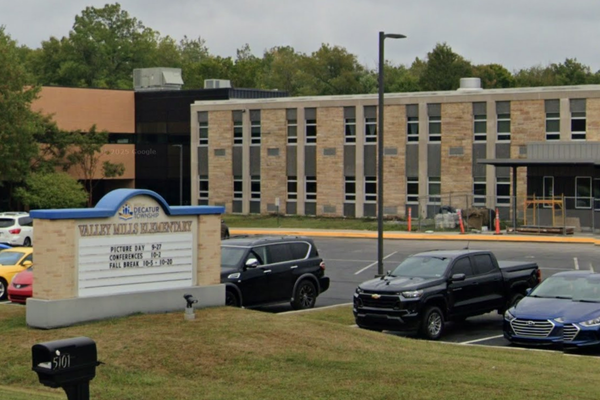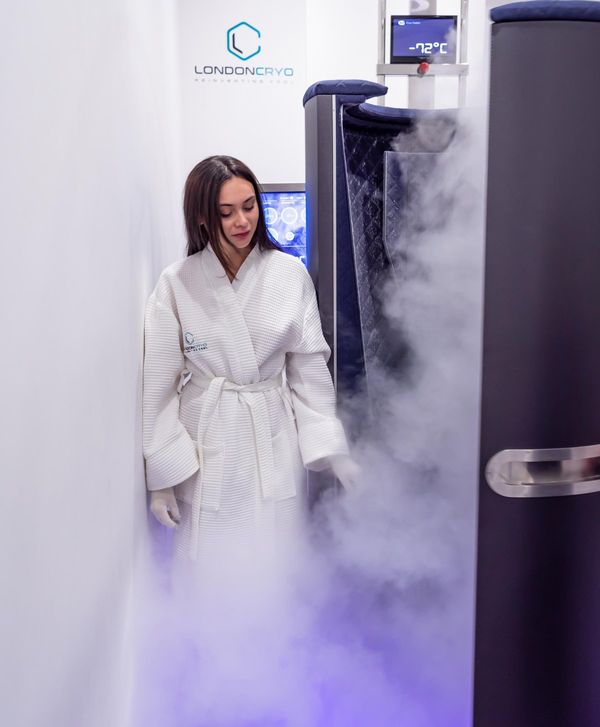
In the world of investing, small-cap stocks often offer some of the most compelling opportunities for significant returns. Small-cap stocks have been gaining increased attention recently, and for good reason.
Investors are shifting from mega-cap technology stocks to previously neglected corners of the market, as recent cooler-than-expected inflation data in the U.S. sparked speculation that the Federal Reserve might soon cut interest rates. Small caps are generally more dependent on financing to fuel growth, and could experience significant gains from falling interest rates.
Tom Lee, head of research at Fundstrat, suggests that the small-cap rally could extend well beyond two months, resulting in substantial gains for this group. “We think this move could be something like 10 weeks and as much as 40%. I think it is just starting,” Lee said last Monday on CNBC’s Closing Bell: Overtime.
In this article, we spotlight three small-cap stocks that have captured significant bullish sentiment: Hillenbrand, Inc. (HI), Helix Energy Solutions Group, Inc. (HLX), and Dynavax Technologies Corporation (DVAX). These companies are all components of the S&P Smallcap 600 Index ($IQY), and stand out on the basis of their consensus “Strong Buy” ratings and impressive upside potential to Wall Street's mean price targets, ranging from 27% to an eye-popping 146%.
Here's a closer look at these stocks.
1. Hillenbrand
With a market capitalization of about $3 billion, Hillenbrand, Inc. (HI) offers industrial processing equipment, systems, and solutions. The company designs, engineers, manufactures, markets, and services equipment and systems for various industries, including durable plastics, food, and recycling. Hillenbrand's processing technologies encompass extrusion, material handling, ingredient automation, and injection molding.
Shares of Hillenbrand have lost 10.2% on a year-to-date basis, underperforming the S&P Smallcap 600 Index’s gain of 4.7% during the same time frame.
On July 9, KeyBanc initiated coverage of Hillenbrand with an “Overweight” rating and a $50 price target.
“While current cyclical dynamics remain choppy, we are starting to see signs of leading indicators coming off trough levels, which should begin to show through on the MTS business and its implied fiscal second-half 2024 ramp,” analyst Jeffrey Hammond wrote in a report. The analyst believes Hillenbrand shares are undervaluing the substantial transformation the company has undergone over the past two years, and despite short-term cyclical concerns, the firm envisions a potential for the stock to re-rate higher.
Hillenbrand released its most recent quarterly earnings report on April 30. It’s important to highlight that the company operates through two segments: Advanced Process Solutions (APS) and Molding Technology Solutions (MTS). In FQ2, the company’s total revenue increased 14% year-over-year to $785 million, driven by the acquisition of the Schenck Process Food and Performance Materials (FPM) business. However, its top line missed expectations by $16.58 million. Moreover, on an organic basis, HI’s revenues declined 5% year-over-year as increased aftermarket revenue and pricing were outweighed by a reduction in capital equipment volume, primarily driven by a drop in MTS. Also, the company posted non-GAAP EPS of $0.76 for the quarter, beating estimates by $0.01.
HI's first business segment, representing approximately 70% of total revenue, offers highly engineered process and material handling equipment. Additionally, it manufactures systems and supplies aftermarket parts and services for various industries. Management cites examples such as durable plastics, food, and recycling. The global market opportunity for this segment is substantial, with management estimating it at $35 billion. The APS segment’s revenue grew 30% year-over-year to $559.2 million in Q2, largely due to the FPM acquisition, while organic revenue remained flat as higher aftermarket parts and service revenue and pricing were offset by lower capital equipment volume. Adjusted EBITDA rose 38% year-over-year to $101 million for the quarter, mainly due to the FPM acquisition, while organic adjusted EBITDA increased 7%, driven by pricing and cost actions, though partly offset by cost inflation and lower volume.
However, the company observed that slower-than-expected final customer decisions are negatively impacting the segment’s top line for the year. In response, the company implemented cost measures during the quarter, such as targeted restructuring and strict controls on hiring, travel, and other discretionary expenses, leading to a 100 basis point expansion in adjusted EBITDA margin to 18.0%.
In the MTS segment, revenue fell 13% year-over-year to $226 million, mainly due to reduced volume in injection molding equipment. Adjusted EBITDA fell 29% year-over-year to $34 million, largely due to reduced volume and cost inflation, though partially mitigated by cost actions, while the adjusted EBITDA margin decreased by 330 basis points to 14.9%. The company initiated a restructuring program for the MTS segment in the first quarter - initially projected to cost around $20 million, but expanded to include an additional facility consolidation, leading to approximately $25 million in restructuring costs for the second quarter.
The company’s operating cash flow was $3 million for the quarter, a decrease of $47 million from the previous year, primarily due to the timing of working capital needs and reduced customer advances on large plastics projects. As of the end of the second quarter, the company had net debt of around $1.88 billion and liquidity of about $725 million, which included $224 million in cash and the rest available through its revolving credit facility.
Looking ahead, the company revised its full-year guidance downward due to order patterns in the quarter falling short of management's initial expectations. For fiscal 2024, management forecasts Hillenbrand's total revenue to be between $3.2 billion and $3.3 billion, down from the prior range of $3.3 billion to $3.4 billion. Adjusted EBITDA is projected to range from $512 million to $536 million, revised from $530 million to $588 million, while adjusted EPS is anticipated to be $3.30 to $3.50, compared to the earlier range of $3.60 to $3.95.
The company is expected to release its FQ3 results on Aug. 7, after the market closes. Analysts forecast a 13.68% year-over-year decline in Hillenbrand’s EPS to $0.82 for the quarter, while revenue is projected to increase 14.17% year-over-year to $818.12 million.
At current levels, HI appears to be undervalued. The stock is currently trading at 12.84 times the consensus earnings estimate for 2024, which is below the sector median of 19.09x but consistent with its own five-year average of 12.42x. Also, HI’s forward price/sales ratio is 0.93x, which is below both the sector median of 1.50x and the stock’s five-year average of 1.05x.
On the dividend side, Hillenbrand offers an annualized dividend of $0.89 per share, translating into a dividend yield of 2.07%, which surpasses the sector’s median of 1.43%. Also, the company maintains a modest dividend payout ratio of 25.07%, backed by 15 consecutive years of dividend growth.
Hillenbrand has a unanimous “Strong Buy” rating from the three analysts in coverage. The mean target price for HI stock is $54.67, which is about 27% above Friday’s closing price.
2. Helix Energy Solutions Group
Houston-based Helix Energy Solutions Group (HLX) is a global offshore energy company offering specialized services to the industry, with a focus on expanding its well intervention and robotics operations.
Valued at $1.92 billion by market cap, HLX shares have rallied 22.5% on a year-to-date basis, outperforming IQY’s gain over the same period.
On June 25, TD Cowen raised its price target on Helix Energy to $16 from $15 and kept a “Buy” rating on the shares. The firm indicated that earnings and free cash flow are expected to rise as legacy day rates are replaced by higher, leading-edge rates. TD Cowen adjusted its estimates upward due to heightened confidence in the cycle’s duration.
Helix Energy Solutions reported its financial results for the first quarter of fiscal 2024 on April 24. Q1 revenue increased by 18.4% year-over-year to $296.21 million, driven by higher revenues in the Well Intervention, Robotics, and Production Facilities segments, partially offset by lower revenues in the Shallow Water Abandonment segment. The company’s revenue missed the consensus by only $0.52 million.
HLX reported a net loss of $26.3 million, or $0.17 per diluted share, for the quarter, compared to a net loss of $5.2 million, or $0.03 per diluted share, in the same quarter last year, missing consensus estimates by $0.21. However, this high net loss figure was primarily due to a $21 million pre-tax loss associated with the retirement of the company’s remaining 2026 convertible notes. This finalized the debt restructuring that began in the fourth quarter of 2023, resulting in a simplified and more traditional debt structure without the impact of equity overhang.
The company’s adjusted EBITDA for the quarter was $47 million, a substantial improvement from $35.1 million in the same quarter last year. Additionally, cash generation was exceptionally strong. Operating cash flow totaled $64 million, leading to a free cash flow of $61 million.
Helix’s cash and liquidity remained robust, with $324 million in cash and cash equivalents and $96 million available under its ABL facility, leading to a total liquidity of $419 million.
It is also important to note that the company repurchased around half a million shares for $5 million in the first quarter, with approximately $0.9 million of this amount accrued at quarter-end.
Looking ahead, management reaffirmed its guidance for the full year of 2024. Revenue is projected to range between $1.2 billion and $1.4 billion, remaining mostly stable to slightly higher compared to the previous year. Adjusted EBITDA is anticipated to range from $270 million to $330 million, showing slight improvements over 2023, particularly in the Well Intervention segment, though this will be partially offset by a weaker shallow water market. Free cash flow is expected to range between $65 million and $115 million, which will be impacted by a $58 million earn-out payment the company made in early April related to the Alliance acquisition.
The company is scheduled to announce its Q2 results this Wednesday, July 24, after the market closes. Analysts tracking the company project a 63.64% year-over-year jump in earnings to $0.18 per share for the second quarter, and a 9.84% year-over-year rise in revenue to $339.20 million.
In terms of valuation, the company’s forward EV/EBITDA ratio stands at 8.42x - which is higher than the sector median of 5.98x but roughly in line with its own five-year average of 8.34x. Also, it has a forward EV/sales multiple of 1.75x, which is lower than the sector median of 2.15x.
Each of the three analysts covering Helix Energy stock has a “Strong Buy” recommendation. The average target price for HLX is $16.33, indicating an upside potential of around 30% from Friday’s closing price.
3. Dynavax Technologies
Dynavax Technologies Corporation (DVAX), based in California, is a commercial-stage biopharmaceutical company dedicated to developing vaccines for infectious diseases by utilizing its CpG 1018 adjuvant technology from its Toll-like Receptor Immune Modulation platform. Its market cap currently stands at $1.34 billion.
Shares of Dynavax Technologies have dropped 26.7% on a year-to-date basis, lagging behind the S&P Smallcap 600 Index’s gain over the same period.
On June 27, Dynavax announced that the first participant was dosed in a Phase 1/2 clinical trial assessing the safety, tolerability, and immunogenicity of Z-1018, its investigational vaccine candidate aimed at preventing shingles (herpes zoster), a debilitating condition caused by the varicella-zoster virus.
On May 8, Dynavax released its Q1 earnings, and the results were weaker than expected. Total revenue grew 8.2% year-over-year to $50.79 million, falling short of the consensus by $4.19 million. Its total revenue consists of amounts earned from product sales and other revenues. Net product revenue comprises sales of HEPLISAV-B, the company’s hepatitis B vaccine first approved by the FDA in 2017. HEPLISAV-B distinguishes itself from other hepatitis B vaccines by requiring only two doses within a month, while other vaccines require three doses administered over six months.
For the first quarter of 2024, the HEPLISAV-B vaccine generated net product revenue of $47.8 million, marking a 10% increase from $43.5 million in the first quarter of 2023. The sales growth was sustained by HEPLISAV-B’s strong performance in two key segments: retail pharmacy and integrated delivery networks. The company anticipates these segments will drive substantial growth, and account for over 60% of the total adult hepatitis B market in the U.S. by 2027. It’s also noteworthy that HEPLISAV-B’s total U.S. market share rose to an estimated 41% in the first quarter, up from 37% in the same period last year.
Dynavax reported a net loss of $8.7 million, or $0.07 per share, missing expectations by $0.04. However, this was a significant improvement over the first quarter of 2023, when the net loss was $24.3 million. The company is approaching profitability, and anticipates that its liquid assets will be higher by the end of the year compared to the end of the previous year.
DVAX also has a solid balance sheet. The company ended the quarter with cash, cash equivalents, and marketable securities of $724 million. As a result, Dynavax should have no trouble meeting its short-term obligations and is well-funded to progress its current pipeline assets. Moreover, management expects cash, cash equivalents, and marketable securities to be higher at the end of 2024 compared to Dec. 31, 2023.
Looking ahead, Dynavax reaffirmed its earlier 2024 guidance. HEPLISAV-B’s net product revenue is projected to range from approximately $265 million to $280 million, including around $3 million in ex-U.S. sales through a commercialization partnership in Germany.
Analysts tracking Dynavax forecast a 100% year-over-year surge in its profit to $0.06 per share for the second quarter of 2024. Moreover, Wall Street expects DVAX’s revenue to grow 26.21% year-over-year to $76.04 million in Q2.
In terms of valuation, the stock is trading at 4.71 times forward sales, which is higher than the sector median of 3.82x, but lower than its own five-year average of 7.32x.
Analysts have a consensus rating of “Strong Buy” on Dynavax stock. Out of five analysts covering the stock, four recommend a “Strong Buy,” and the remaining one gives a “Hold” rating. The average analyst price target of $25.25 indicates a potential upside of about 146% from Friday’s closing price.







